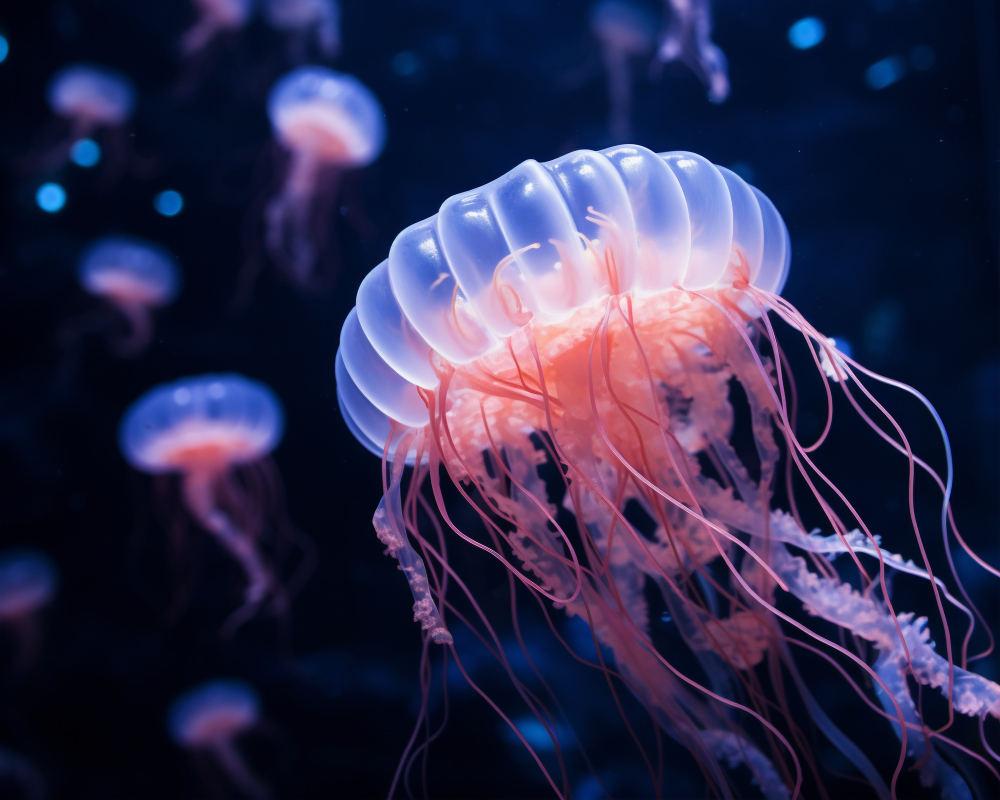With the arrival of summer, Spain’s beaches become a sanctuary for thousands seeking refuge from the heatwave. However, a carefree day by the sea can be abruptly interrupted when unwelcome visitors appear, demanding caution. The massive proliferation of jellyfish, especially the Mauve Stinger (Pelagia noctiluca), is a growing problem that, according to experts, is directly caused by the imbalance in the marine ecosystem.
The Causes: Why There Are More and More Jellyfish
Ricardo Aguilar, expedition leader at the renowned NGO Oceana, gets straight to the point. Climate change is leading to a steady rise in water temperatures, creating ideal breeding conditions for many jellyfish species. At the same time, overfishing is causing a drastic decline in their natural predators, such as the loggerhead sea turtle or the bluefin tuna. This combination of warmer water and a lack of hunters is leading to a veritable explosion in jellyfish populations. Added to this is the increasing pollution of the oceans, not only from plastics but also from fertilizers from agriculture, which promote algae growth and thus the jellyfish’s food source.
Dangerous Visitors: Not Every Jellyfish is Harmless
Experts are particularly concerned about the increase in the Portuguese man o’ war (Physalia physalis). Although often mistaken for a jellyfish, it is a colony of polyps whose venom is far more potent. “Contact can be fatal for allergy sufferers or individuals with pre-existing health conditions,” warns Aguilar. The tentacles of this organism can grow up to 10 meters long and remain active and dangerous even hours after being stranded on the beach.
The human body’s reaction to contact—often incorrectly called a “bite”—is comparable to a bee sting. The intensity depends on the individual’s constitution. While most people get away with local pain and skin irritation, it can cause severe allergic reactions in sensitive individuals.
However, there are also harmless species that are increasing in number. The fried egg jellyfish (Cotylorhiza tuberculata), the moon jellyfish (Aurelia aurita), or the barrel jellyfish (Rhizostoma pulmo) pose little threat, as their stinging cells cannot penetrate human skin.
Affected Areas and What to Do in an Emergency
The presence of jellyfish on the Spanish coasts is heavily influenced by wind and ocean currents. The coasts of the Balearic Islands and Andalusia are particularly affected as they are located in key biological corridors like the Strait of Gibraltar. However, currents can also carry the animals to the Atlantic coasts.
To warn beachgoers and collect data, citizen science apps like MedusApp are gaining importance. Users can report sightings and stings, thus contributing to a better understanding of their distribution.
What to do if stung? Ricardo Aguilar advises the following steps:
- Rinse only with seawater: Wash the affected area exclusively with salt water. Fresh water can activate remaining stinging cells and worsen the reaction. Home remedies should be avoided.
- Remove tentacle remnants: If tentacles are still stuck to the skin, remove them carefully (e.g., with tweezers or a credit card) without rubbing them.
- Apply cold: Place a cold pack wrapped in a cloth on the area to reduce swelling and pain.
- Seek medical help: Go to a medical center immediately, especially if the pain is severe or symptoms like nausea or difficulty breathing occur. Every case is different and requires professional assessment.




